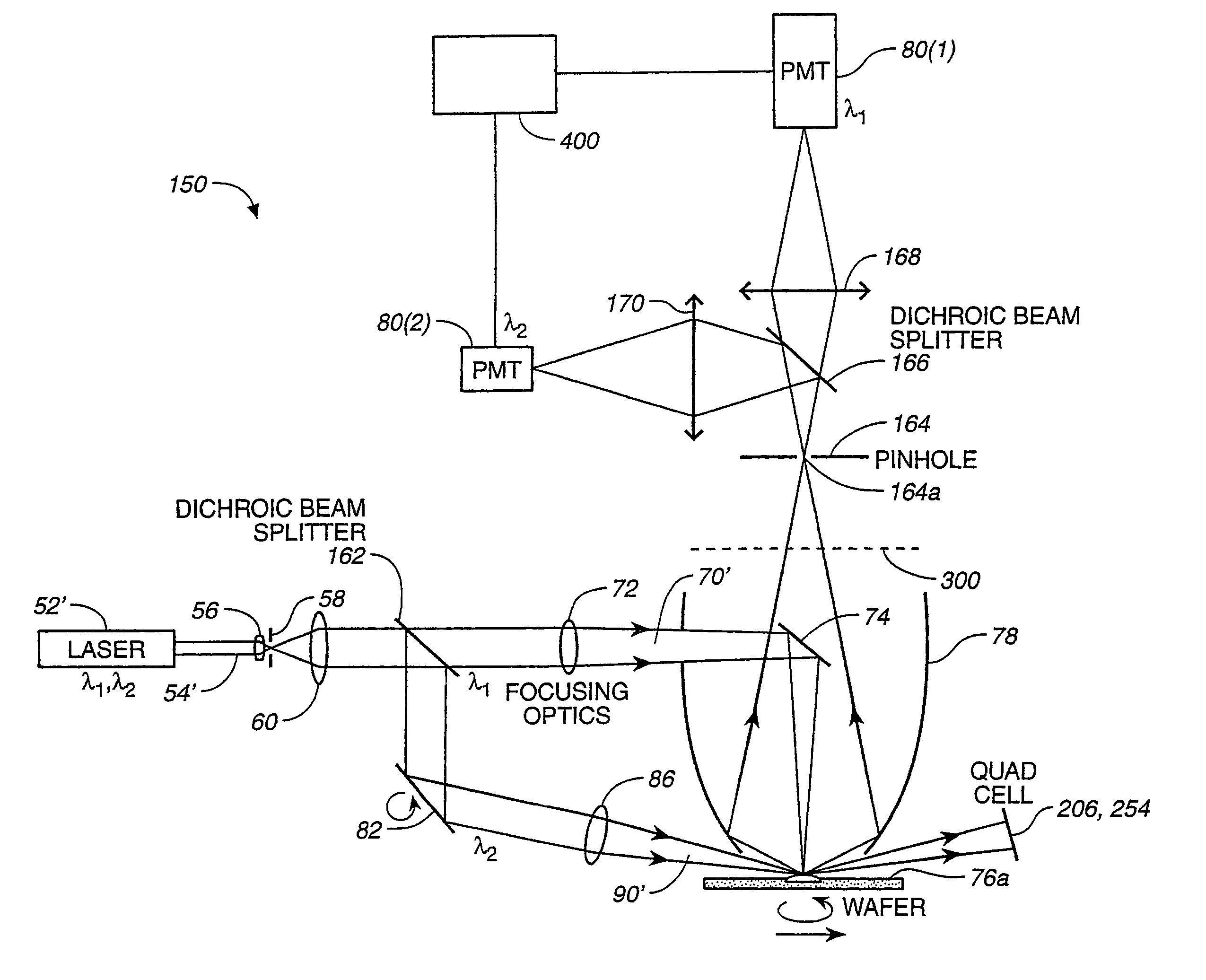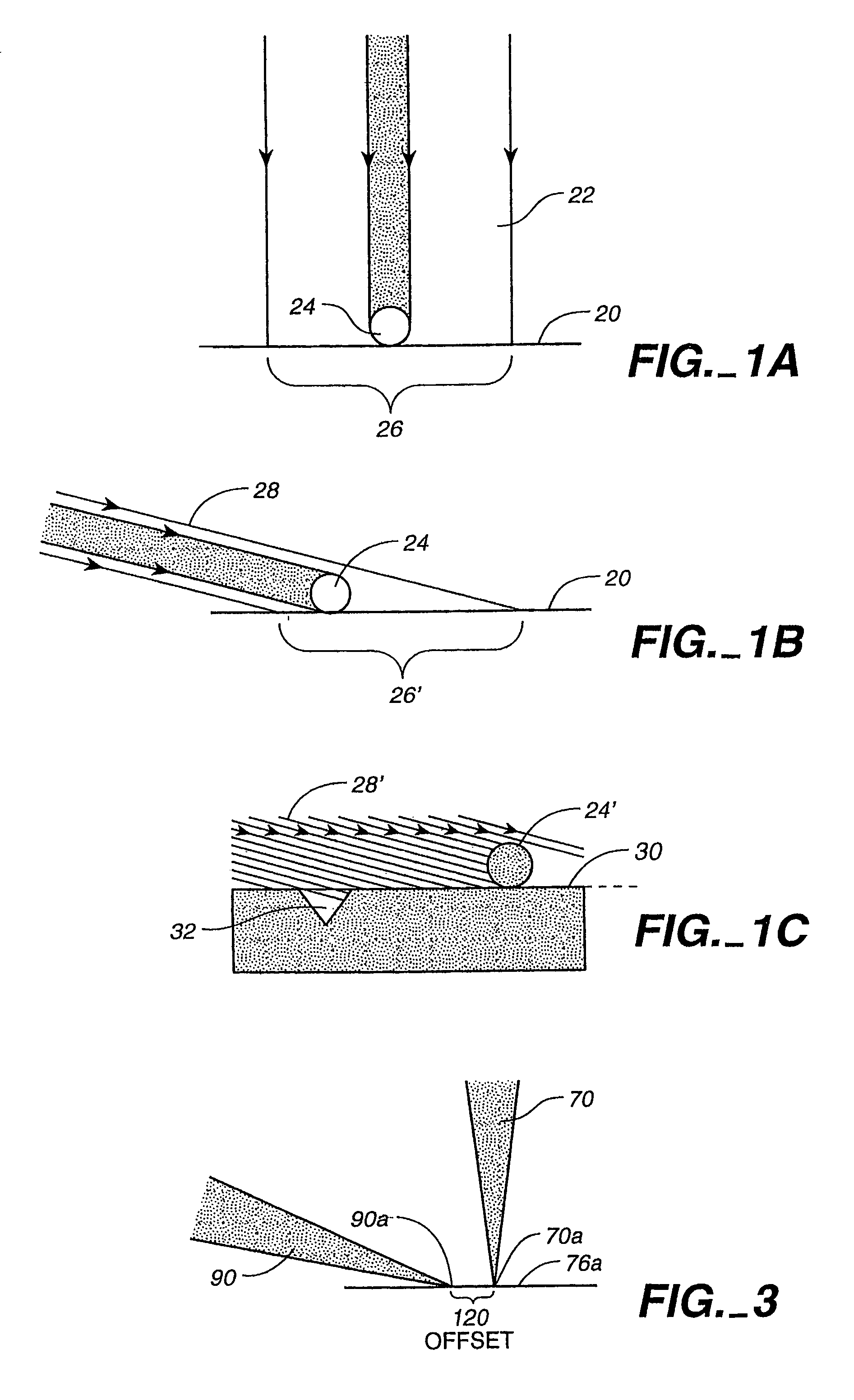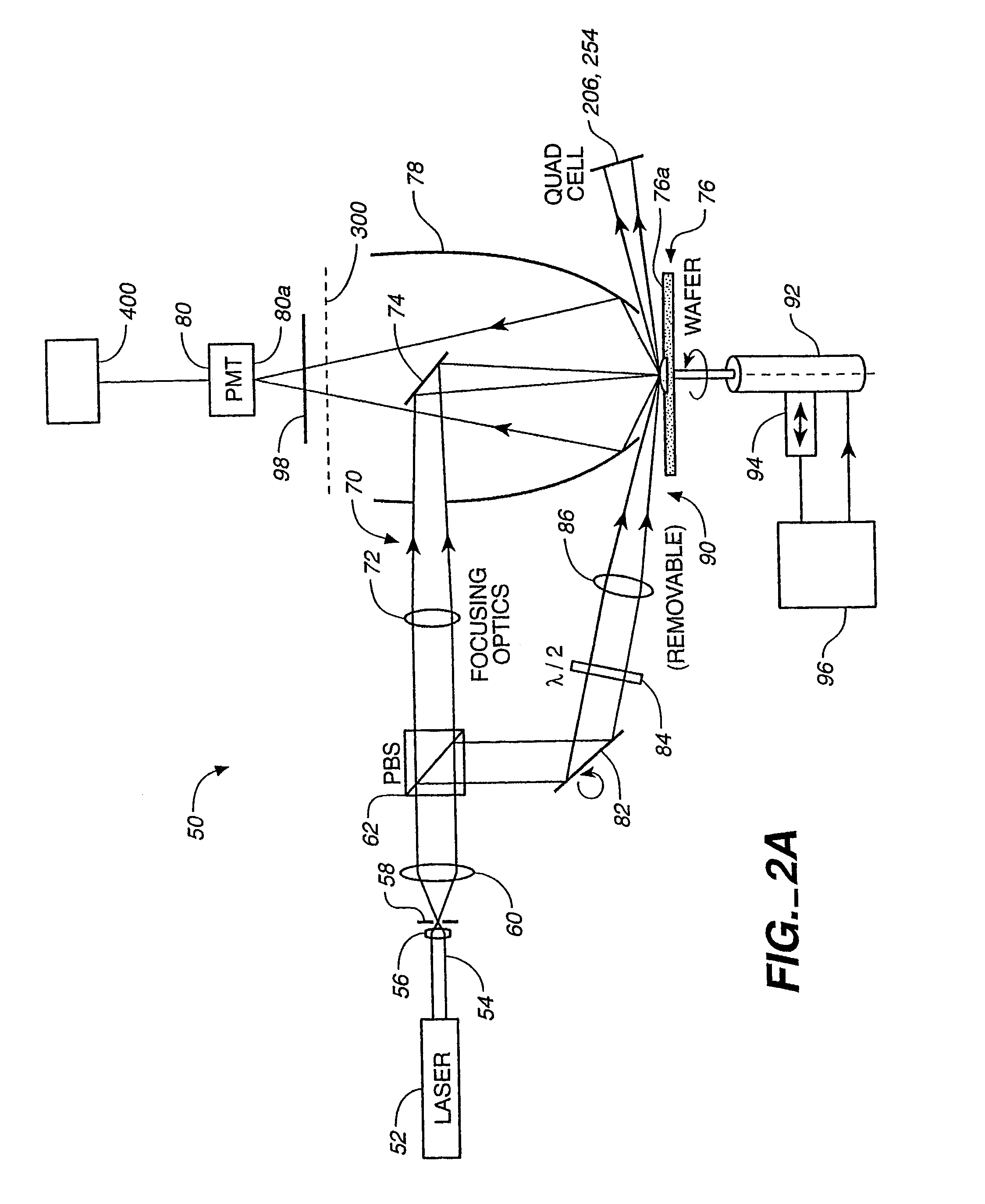Sample inspection system
a technology of sample inspection and inspection system, which is applied in the field of sample inspection system, can solve the problems of surface breaking defects in semiconductor wafers, potential detriment to the performance of semiconductor chips made from wafers with such defects, and surface breaking defects in wafers, so as to reduce the position error of spots
- Summary
- Abstract
- Description
- Claims
- Application Information
AI Technical Summary
Benefits of technology
Problems solved by technology
Method used
Image
Examples
Embodiment Construction
[0032]FIG. 1A is a schematic view of a surface 20 of a sample to be inspected and an illumination beam 22 directed in a direction normal to surface 20 to illuminate the surface and a particle 24 on the surface. Thus, the illumination beam 22 illuminates an area or spot 26 of surface 20 and a detection system (not shown) detects light scattered by particle 24 and by portion or spot 26 of the surface 20. The ratio of the photon flux received by the detector from particle 24 to that from spot 26 indicates the sensitivity of the system to particle detection.
[0033]If an illumination beam 28 directed at an oblique angle to surface 20 is used to illuminate spot 26′ and particle 24 instead, as shown in FIG. 1B, from a comparison between FIGS. 1A and 1B, it will be evident that the ratio of the photon flux from the particle 24 to that from the illuminated spot will be greater in the case of the oblique illumination in FIG. 1B compared to that in FIG. 1A. Therefore, for the same throughput (s...
PUM
| Property | Measurement | Unit |
|---|---|---|
| angle | aaaaa | aaaaa |
| angle | aaaaa | aaaaa |
| wavelength | aaaaa | aaaaa |
Abstract
Description
Claims
Application Information
 Login to View More
Login to View More - R&D
- Intellectual Property
- Life Sciences
- Materials
- Tech Scout
- Unparalleled Data Quality
- Higher Quality Content
- 60% Fewer Hallucinations
Browse by: Latest US Patents, China's latest patents, Technical Efficacy Thesaurus, Application Domain, Technology Topic, Popular Technical Reports.
© 2025 PatSnap. All rights reserved.Legal|Privacy policy|Modern Slavery Act Transparency Statement|Sitemap|About US| Contact US: help@patsnap.com



